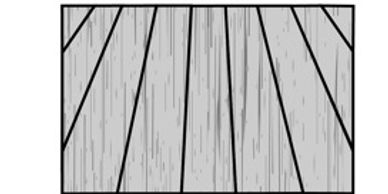Let's Talk About Collar Safety
To Wear or Not to Wear
Obviously the choice of collar or no collar is a personal decision - one that you will need to make based on many factors. One of the factors we want you to consider is the danger that lurks when dogs live and play with collars on.
Collars, as a rule, are a good thing. They hold the tags that let people know dogs belong somewhere and have families. But collars that get caught, can be collars that kill. Thousands of dogs die or are injured every year in collar related accidents.
The Danger
Dogs getting seriously injured or dying from playing and living with collars on is a reality. Play biting is the #1 reported collar accident. Watch dogs play. They are always biting at the neckline. Jaws, teeth and paws are all easily caught in collars. This is how Gracie died.
Your dog's collar and tags can get caught almost anywhere. It's a roll of the dice when this could happen to you.
Common Hazards
Play Biting

Heating and Cooling Vents

Fences

Deck Slats

Furniture and Cabinet Hardware

Crates

What you can do to help keep your dog safe

Safety Tips
- Remove collars when crating or boarding. ALWAYS take the collar OFF before placing your dog in a crate. Check daycare and kennel facility policies. They should not be putting your dog in a crate or kennel with a collar on, either. This is dangerous.
- Look for opportunities to live and "play naked" (without collars). Remove the collar when your dog is home alone. When you leave the house, take it off. Your dog doesn't need to wear their collar inside the house when you are not home. This is especially important if you have more than one dog. Play biting is the top-reported collar accident.
- Choose collars wisely. It is important to understand the different collar options available to you. Not all collars fit all situations. Consider quick-release or breakaway collars, or opt for a harness. Avoid chain "training" collars.
- Supervise your dogs so you can help if they get into trouble. Keep an emergency tool kit handy with tested tools to cut off any collar. The tool kit should include a bolt cutter and industrial-strength scissors.
- Microchip your dog. Collar or no collar, this will increase your chances of being reunited if they are lost or stolen.
Note Worthy
Make it your business to understand the difference between a quick-release collar and a breakaway collar. Many consumers confuse the two collar types. A breakaway collar will breakaway under pressure and fall off your dog. A quick-release collar requires a human to release the buckle. We have heard story-after-story where the quick-release buckle jams under pressure and will not release necessitating it to be cut off to avoid strangulation. Beware.
Collars that are worn loosely around the neck (think chain, martingale) have a greater chance of getting caught on something. Tags and dog collar charms are also a culprit. Again, beware.
Copyright © 2020 nakeddogproject.com - All Rights Reserved.
Powered by GoDaddy Website Builder